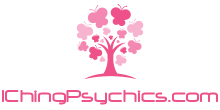 When you are looking for answers about your life and your future, you might want to turn to the I Ching or a palm reader. This is one of the oldest methods of divination and is also called the Book of Changes. This is a part of Taoism and centers around the universe and the changes in it.
When you are looking for answers about your life and your future, you might want to turn to the I Ching or a palm reader. This is one of the oldest methods of divination and is also called the Book of Changes. This is a part of Taoism and centers around the universe and the changes in it.
The I Ching can give you a book based on hexagram or a pair of two trigrams. These are stacked in lines and can be broken or solid. They have different meanings and there can be eight different trigrams which can make 64 hexagrams. This is a fortunetelling reading.
When there are six hexagram lines and they are solid and unbroken, they are called yang. The broken lines are called the yin. Most people are familiar with the yin and yang which means dark and light.
The Taoist symbols look like fish chasing each other’s tails. This represents natural dualities such as light and dark, hot and cold.
The Yin is associated with feminine energy and the yang is considered masculine. Some believe that both hold energies, and neither is one or the other but they are carried to balance each other.
Fortune tellers use the I Ching and flower herbs called yarrow to create hexagrams. They interpret them with knowledge and hope to get information. The grains of rice and other seeds can also be used with the I Ching, along with coins. Some even use dices.
There are different ways to cast a hexagram but the easiest is with three coins or three dice and a piece of paper and a pencil. You sit quietly and ask your question and when you do you shake the coins or the dice and let them fall on the surface. The combinations can tell the answer.
Three tails can mean a broken line.
Two heads and a tail mean a broken line and three heads is a solid line.
Once you figure out which line you have then you need to draw each on the paper and do these six times and figure out which lines you have.
Once you finish, you should have six lines and they should be broken or solid and stacked on each other. You created your hexagram. The outer trigram, the inner one and now you can interpret it.
There are 64 different hexagrams, and each has its own meaning. Some think that beginners should not do their own I Ching because hexagrams are hard to interpret, and they need to practice and have references from people that know what they are doing. You can then ask more questions and figure out more answers as you get better at what you are doing.


‘Yin and yang’ as a representation of duality is certainly poetic, yet to conflate gender with cosmic energies feels reductive.
‘Masculine’ and ‘feminine’ energies are metaphors after all; let’s not forget that every individual embodies both to varying degrees.
‘Book of Changes’ is indeed an apt name for this treasure trove of wisdom. It reflects not only change in the universe but also within ourselves through time.
‘Three tails mean a broken line’—sounds like my last attempt at assembling IKEA furniture. Who knew divination had so much in common with modern living?
‘Just shake some coins and let fate decide!’ Sounds suspiciously like how my last job interview went.
While I appreciate the cultural context, one must question the validity of such divination methods. Are we truly placing our fates in the hands of chance?
The description of hexagrams is intriguing, but it raises a fundamental question: How can one derive meaningful insights from mere combinations of broken and solid lines?
Indeed! It’s fascinating how symbols can evoke profound interpretations, yet it also borders on subjective interpretation rather than empirical truth.
This article beautifully encapsulates the ancient wisdom of the I Ching, shedding light on its significance in understanding life’s complexities.